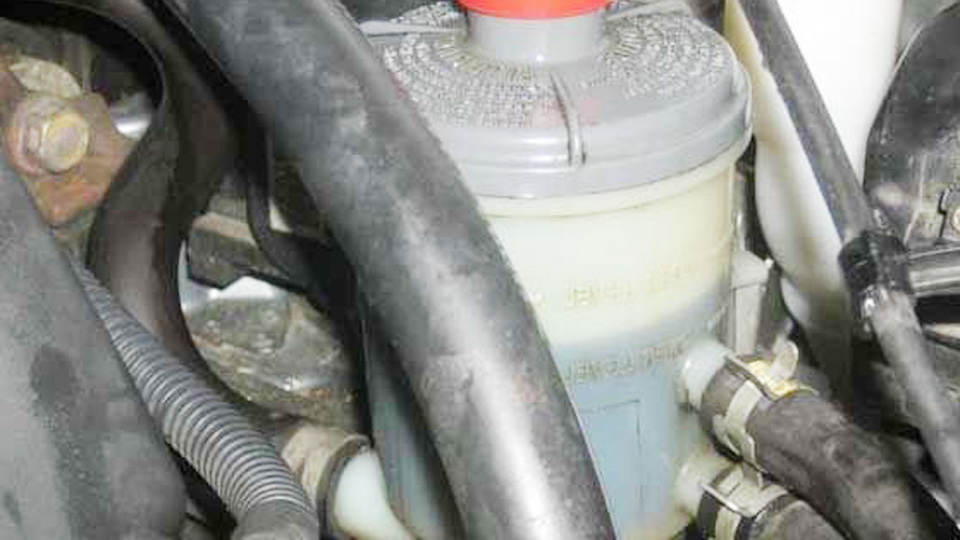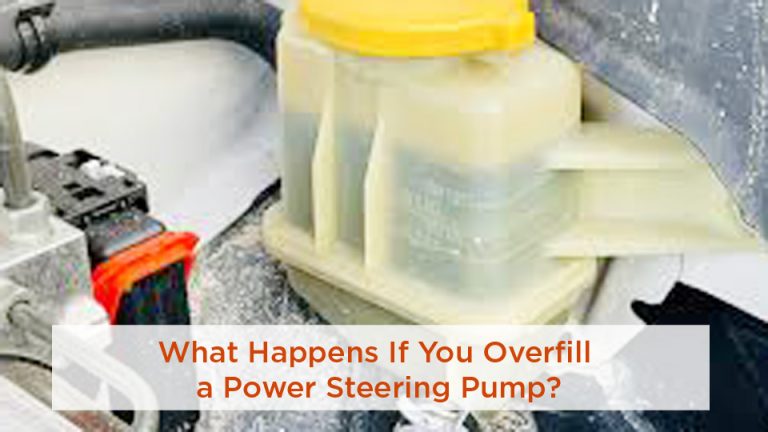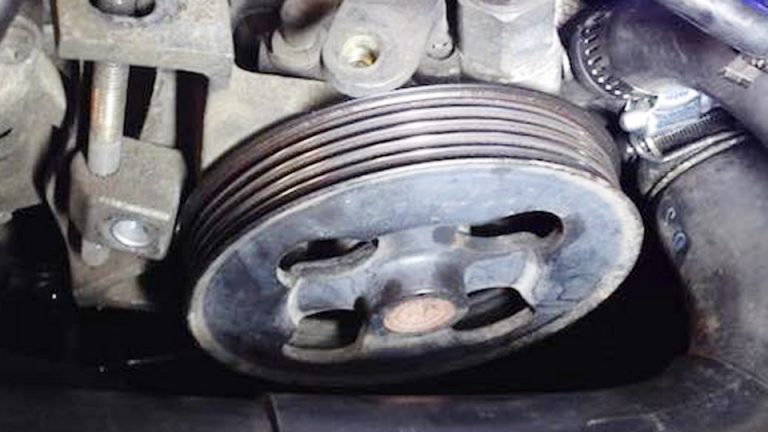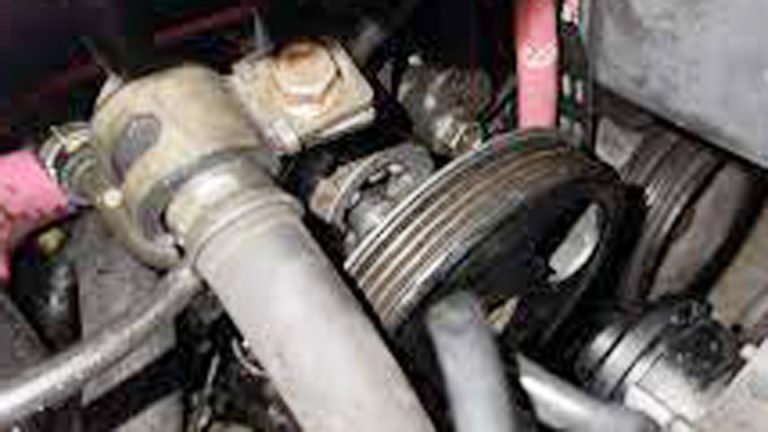A lot of drivers come into the shop complaining about a whining noise whenever they turn the steering wheel, and nine times out of ten, it’s air trapped inside the power steering system. If you’ve ever dealt with stiff steering or that annoying groan when you back out of a parking spot, you know how frustrating—and even dangerous—it can be. That’s where knowing how to bleed air from power steering pump really comes in handy. I’ve bled these systems more times than I can count, and trust me, it’s one of those jobs that looks simple but can cause bigger problems if done wrong.
One mistake I often see car owners make is topping off fluid without actually removing the trapped air, which just leads to more noise, premature pump wear, and higher repair bills down the road. The good news? With the right steps, you can clear out that air and restore smooth, quiet steering without tearing apart half your engine bay.

Image by honda-tech
What Is a Power Steering Pump and How Does It Work?
Picture this: You’re cruising down the highway, and turning the wheel feels like butter. That’s your power steering pump at work. It’s a hydraulic pump driven by the engine’s serpentine belt, circulating power steering fluid through hoses to the steering rack or box. This fluid creates pressure that assists your steering input, making it easier to maneuver heavy vehicles.
In my years as a mechanic, I’ve seen pumps in all shapes—vane-style for most cars, which use rotating vanes to build pressure, or gear-style in some trucks for heavier duty. They mount on the engine block, usually on the passenger side, and connect via pulleys and hoses. Fluid reservoirs are often attached or separate, holding ATF or specific power steering fluid.
Why does this matter? A pump failure turns your comfy sedan into a workout machine. Safety is key here—stiff steering can cause loss of control, especially in emergencies. Performance drops too; I’ve had customers complain about shaky wheels, only to find low fluid from a pump leak starving the system.
Signs Your Power Steering Pump Is Going Bad
Listen up, because catching problems early saves headaches. The most common sign? That high-pitched whine when turning the wheel, especially at low RPMs. It’s air or low fluid cavitating in the pump—I’ve diagnosed this on plenty of Hondas where owners ignored it until the pump seized.
Other red flags: Steering that’s hard or jerky, fluid leaks under the car (that reddish puddle), or a groaning noise on cold starts. If your steering wheel vibrates or feels loose, the pump might be failing to maintain pressure. In trucks like F-150s, I’ve seen overheated pumps from towing heavy loads without proper cooling.
Don’t ignore dashboard warnings either—some modern cars like Toyotas have sensors that light up if pressure drops. From my shop experience, these issues often stem from worn seals or contaminated fluid eating away at internals. If you’re a DIYer, check your fluid level first; milky fluid means water intrusion, spelling pump doom.
When and Why You Need to Replace Your Power Steering Pump
Replacement time hits when repairs won’t cut it—usually after 100,000 miles, but off-roaders or city drivers might see it sooner. Why? Wear from constant pressure cycles breaks down vanes or gears, leading to leaks or inefficiency. Safety is non-negotiable; a failing pump can lock up steering mid-turn.
Cost-wise, ignoring it hikes repair bills—leaks ruin belts or contaminate other components. Performance suffers too; I’ve fixed Rams where bad pumps caused uneven tire wear from overcompensating steering. Reliability drops in cold weather, as thick fluid strains the pump more.
In the US, pumps for popular models like the Chevy Silverado are readily available at AutoZone or O’Reilly. But check compatibility—GM pumps differ by engine size. I once swapped one on a customer’s Jeep Wrangler; mismatched parts led to vibrations, so always verify with your VIN.
OEM vs Aftermarket Power Steering Pumps: Which to Choose?
Deciding between OEM and aftermarket? I’ve installed both in my garage, and it boils down to your needs. OEM pumps, straight from manufacturers like Ford or GM, fit perfectly and match original specs. They’re pricier—$300-$600—but reliable for daily drivers.
Aftermarket options from brands like ACDelco, Gates, or Cardone cost $100-$400 and often come remanufactured. They’re great for budget builds, but quality varies. I’ve used Cardone on older Chevys with success, but some cheap imports fail fast due to subpar materials.
Pros of OEM: Exact fit, longer warranties (up to 3 years), better durability. Cons: Higher cost, harder to find for classics.
Aftermarket pros: Affordable, widely available at NAPA or Amazon, sometimes upgraded designs. Cons: Potential fit issues, shorter life if low-quality.
Here’s a quick comparison table based on US market options for a common vehicle like a 2015 Ford F-150:
| Feature | OEM (Ford) | Aftermarket (ACDelco) | Aftermarket (Cardone Reman) |
|---|---|---|---|
| Price Range | $400-$550 | $150-$250 | $100-$200 |
| Warranty | 2-3 years | 1-2 years | Lifetime limited |
| Material Quality | High-grade alloys | Standard steel | Recycled with new seals |
| Compatibility | Perfect for F-150 | Good, but check brackets | Excellent for most models |
| Durability | 150,000+ miles | 100,000 miles | 80,000-120,000 miles |
From experience, go OEM for luxury cars like BMWs; aftermarket for workhorses. Always read reviews—I’ve avoided knockoffs after seeing them leak on installs.
How to Choose the Right Power Steering Pump for Your Vehicle
Picking the right one starts with your make, model, year, and engine. For US vehicles, use online tools from RockAuto or Advance Auto Parts to cross-reference. I always advise checking pulley type—some are press-fit, others bolt-on.
Brands? Stick to trusted ones: Bosch for Europeans, Maval for reman options. Prices fluctuate—expect $200 average for domestics. Compatibility is crucial; a pump for a V6 won’t fit a V8 without adapters.
Personal tip: In my shop, I’ve seen fakes flood the market. Genuine parts have holograms or serial numbers—check against manufacturer sites. Fakes use cheap rubber that cracks fast, leading to leaks.
Step-by-Step Guide: How to Replace a Power Steering Pump
Alright, let’s get greasy. I’ve done this on everything from Subarus to Dodges—it’s straightforward with the right tools. Safety first: Park on level ground, disconnect battery, wear gloves and eye protection.
Tools needed: Socket set (10-18mm), pulley puller (rent from AutoZone), fluid catch pan, new fluid (check spec—Dexron for GM, ATF for others).
Step 1: Drain the system. Remove reservoir cap, siphon old fluid.
Step 2: Loosen serpentine belt. Use a breaker bar on the tensioner—clockwise for most.
Step 3: Disconnect hoses. High-pressure line needs a flare wrench; return line clamps off.
Step 4: Remove mounting bolts. Usually 3-4; support the pump.
Step 5: Pull the pulley if needed—use a puller tool to avoid damage.
Step 6: Install new pump. Reverse steps, torque bolts to spec (20-30 ft-lbs typically).
Step 7: Refill fluid, then bleed the system—more on that next.
Common mistakes? Over-tightening hoses causes leaks. I’ve fixed that on a buddy’s Tacoma—always hand-tighten first.
Anecdote: Once, on a rainy day, I replaced one on a customer’s Explorer. Skipped bleeding air properly, and it whined like crazy. Lesson learned—patience pays.
How to Bleed Air from Power Steering Pump: A Hands-On Tutorial
This is the heart of it—how to bleed air from power steering pump. Air bubbles cause noise, stiff steering, and pump damage. I’ve bled hundreds after replacements or fluid changes.
Why bleed? Air compresses, disrupting pressure. It’s vital for safety—smooth steering prevents swerves.
Step-by-step:
- Fill reservoir to max with fresh fluid. Use the right type—wrong fluid foams up.
- Jack front wheels off ground safely—use stands.
- Start engine, turn wheel lock-to-lock slowly 5-10 times. Keep reservoir topped—don’t let it run dry.
- Listen for whine; if persistent, shut off, wait, repeat.
- For stubborn air, use a vacuum bleeder on the reservoir—pulls bubbles out.
- Lower vehicle, test drive gently. Recheck fluid.
Tools: Funnel, rags, maybe a Mityvac bleeder ($30 at Harbor Freight).
Common pitfalls: Rushing turns aerates fluid more. I’ve seen DIYers skip jacking, leading to incomplete bleed.
In US vehicles like Chevys, some have bleed screws—open while turning wheel.
Pro tip: Do this with engine cold to avoid burns. From my garage, bleeding fixed 90% of post-replace issues.
Maintenance Tips to Keep Your Power Steering Pump Running Strong
Maintenance is key—check fluid monthly, look for leaks. Change fluid every 50,000 miles; dirty fluid kills pumps.
Use quality fluid—Mercon for Fords, avoid generics that break down seals.
Inspect belts for cracks; a slipping belt starves the pump.
In cold US states like Michigan, warm up engine before hard turns—prevents strain.
Anecdote: A regular customer with a Silverado ignored fluid checks; pump failed at 80,000 miles. After teaching him basics, it’s going strong at 150,000.
Identifying Genuine vs Fake Power Steering Pumps
Fakes are rampant online—Ebay sellers peddle them cheap. Genuine ones have OEM stamps, precise machining.
Check packaging: Real ACDelco has holograms. Weigh it—fakes are lighter.
Buy from authorized dealers like dealerships or Summit Racing.
I’ve returned fakes that leaked immediately—save receipts.
Common Mistakes When Working on Power Steering Systems
Biggest? Using wrong fluid—ATF in a system needing PSF causes foaming.
Not torquing bolts right strips threads.
Skipping belt alignment post-install vibrates the pump to death.
From shop stories, overfilling reservoirs blows seals on hot days.
Always double-check hoses for kinks.
Power Steering Pump Brands and Options in the US Market
Top picks: ACDelco for GM, Motorcraft for Ford—reliable, $200-400.
Budget: Edelmann hoses pair well with pumps.
For performance, upgrade to high-flow pumps from PSC for off-road Jeeps.
Availability: Auto parts stores stock them; online for rares.
Pros/cons: Premium brands last longer but cost more. Budget ones suffice for commuters.
Conclusion
Wrapping this up, your power steering pump is essential for safe, enjoyable driving—keep it maintained, and it’ll reward you with miles of smooth handling. When buying, weigh OEM reliability against aftermarket savings, always prioritizing fit and quality. For installations, take your time, use the right tools, and bleed thoroughly to avoid comebacks. After any work, drive easy for the first 50 miles to let the system settle—I’ve caught minor leaks that way.
FAQ
What Causes Air to Get into the Power Steering System?
Air sneaks in during fluid changes, leaks, or pump replacements if not sealed properly. I’ve seen it most in systems with cracked reservoirs—check for low fluid first, then bleed as outlined.
How Long Does a Power Steering Pump Last?
Typically 100,000-150,000 miles, but driving style matters. In my experience with fleet vehicles, highway miles extend life; stop-go city wear shortens it. Regular fluid swaps help.
Can I Drive with a Bad Power Steering Pump?
Technically yes, but it’s risky—stiff steering fatigues you fast. I’ve towed cars where pumps failed mid-drive; better to fix ASAP for safety.
What’s the Difference Between Power Steering Fluid and ATF?
Some systems use ATF (like older Fords), but dedicated PSF is low-foam for modern pumps. Mixing? Bad idea—causes seal swell. Always check your manual.
How Much Does It Cost to Replace a Power Steering Pump?
DIY: $150-400 in parts. Shop: $500-900 including labor. Prices vary by vehicle—cheaper for domestics like Chevys than imports. Shop around for deals.



